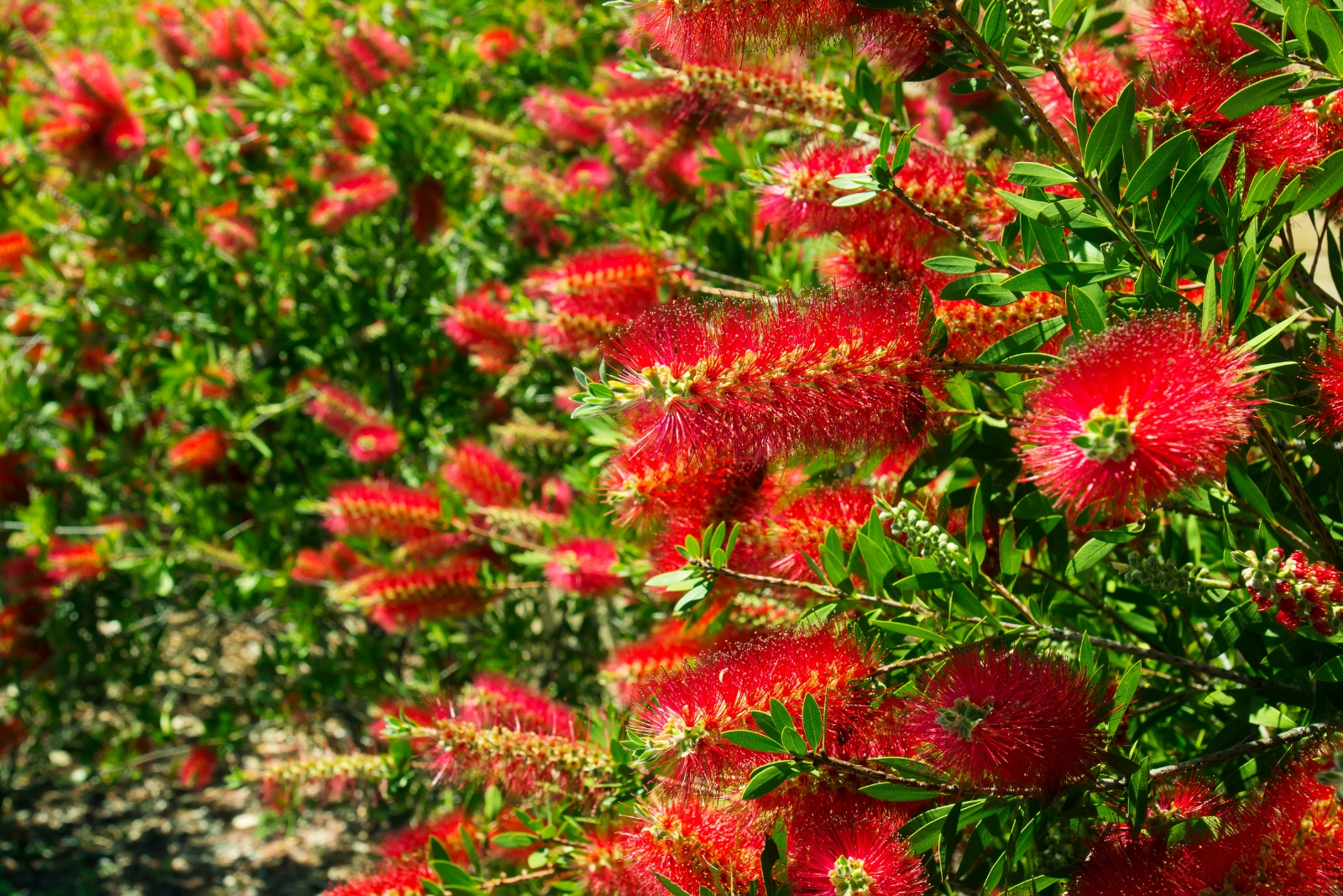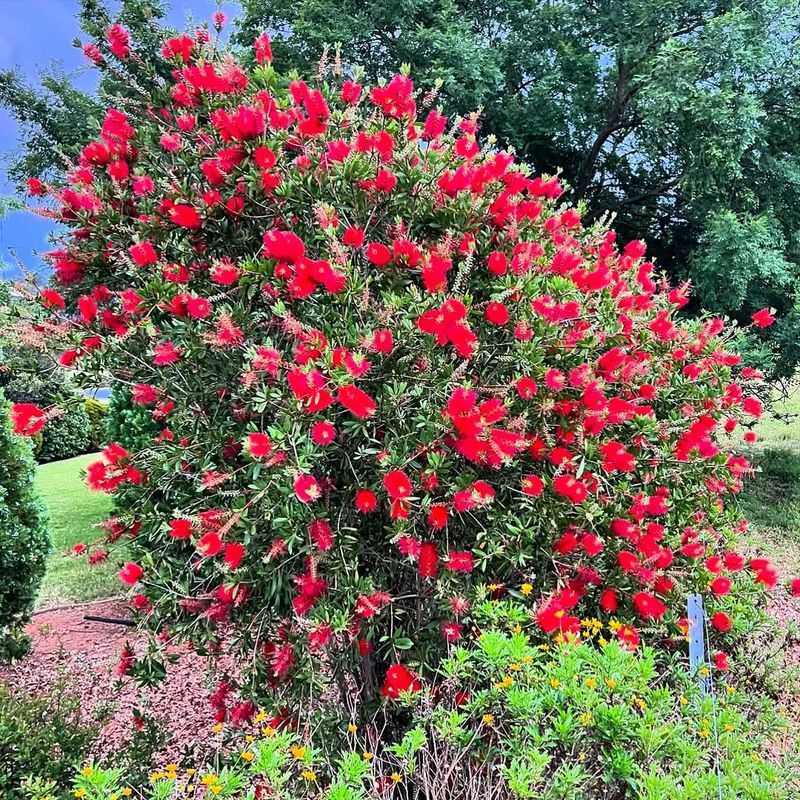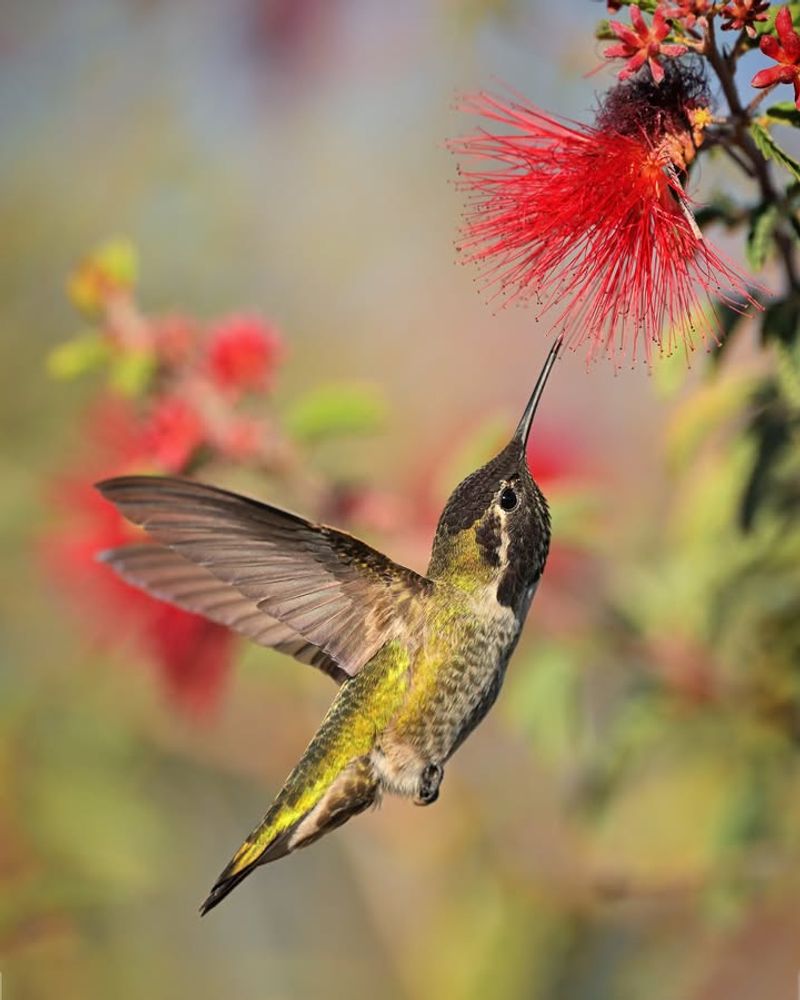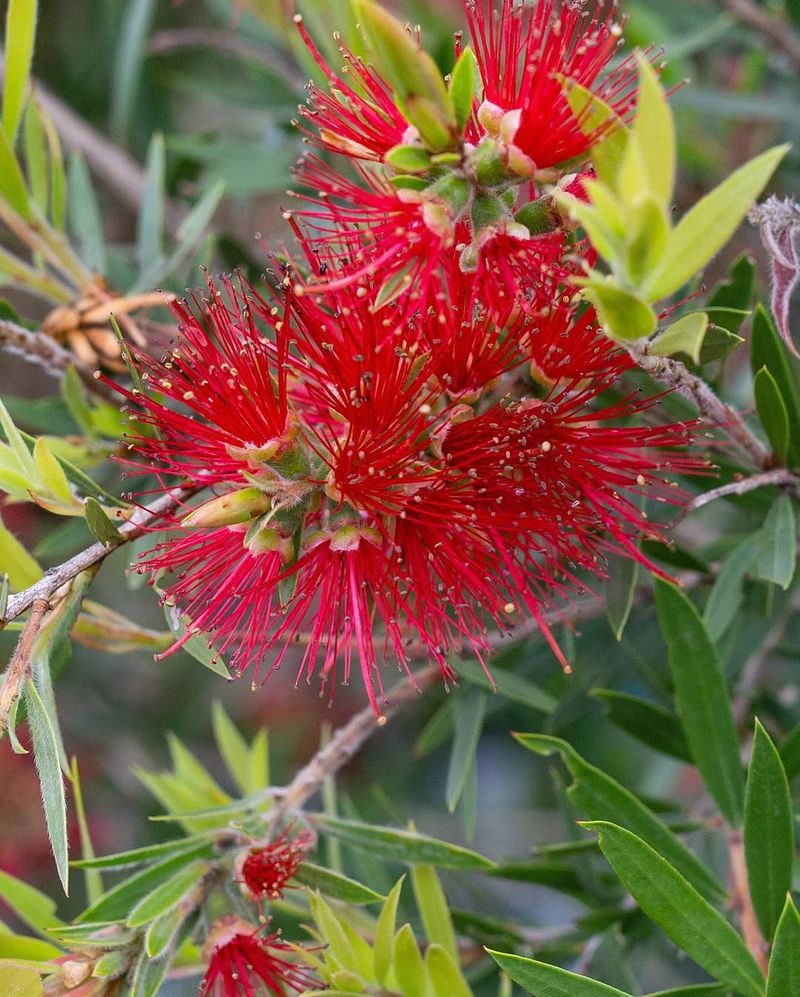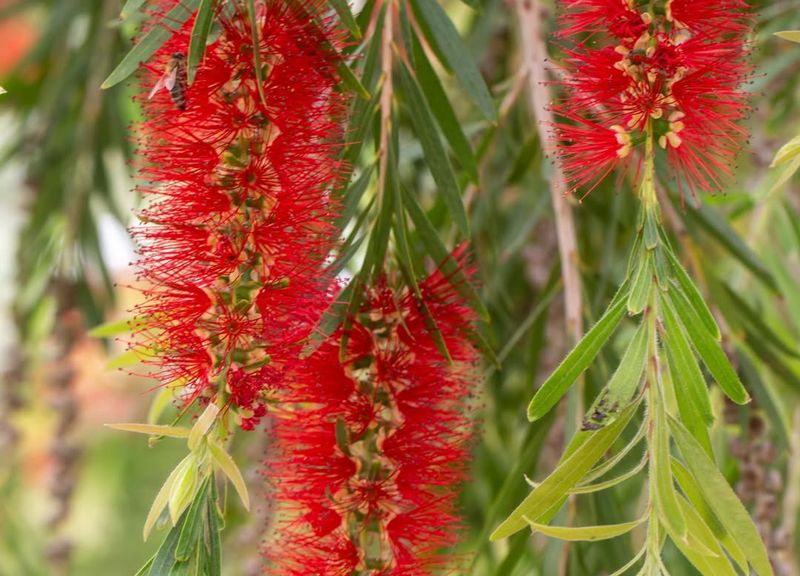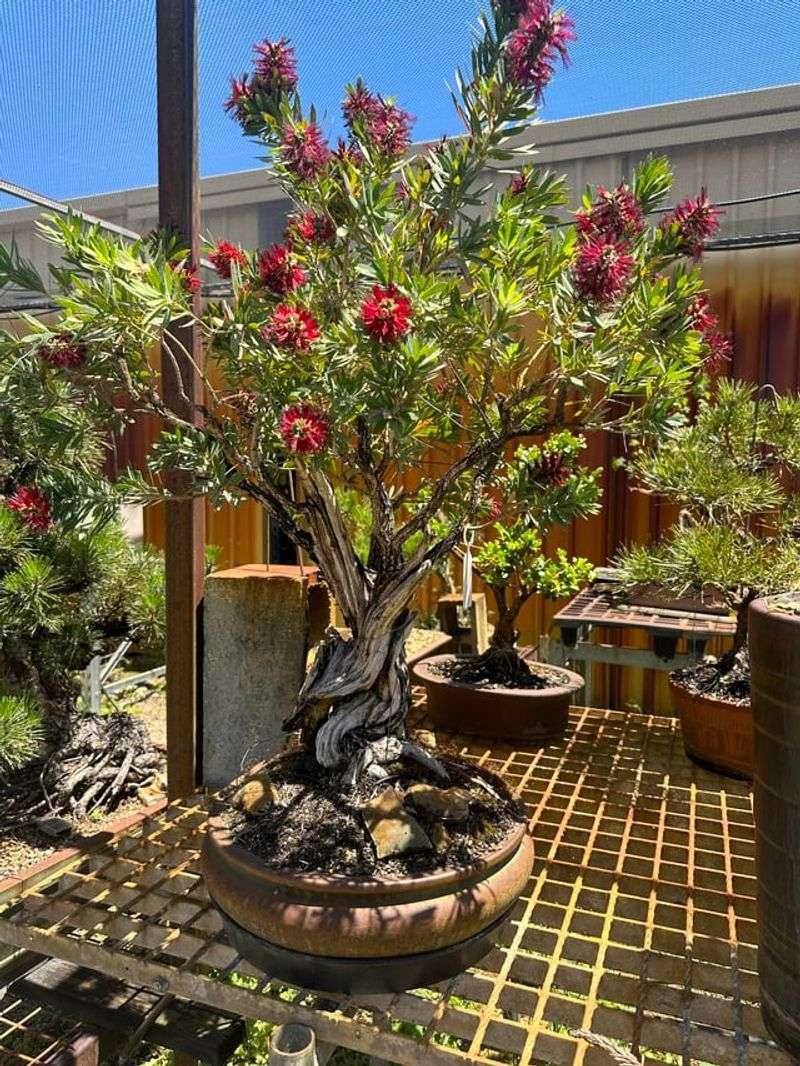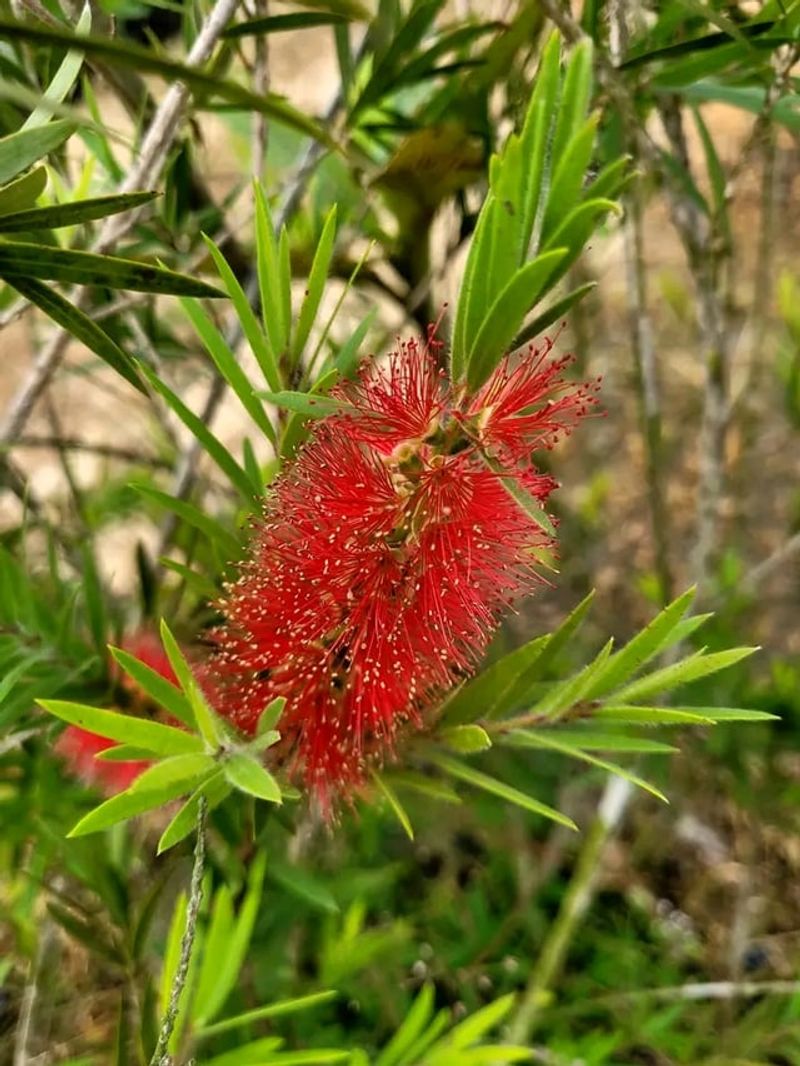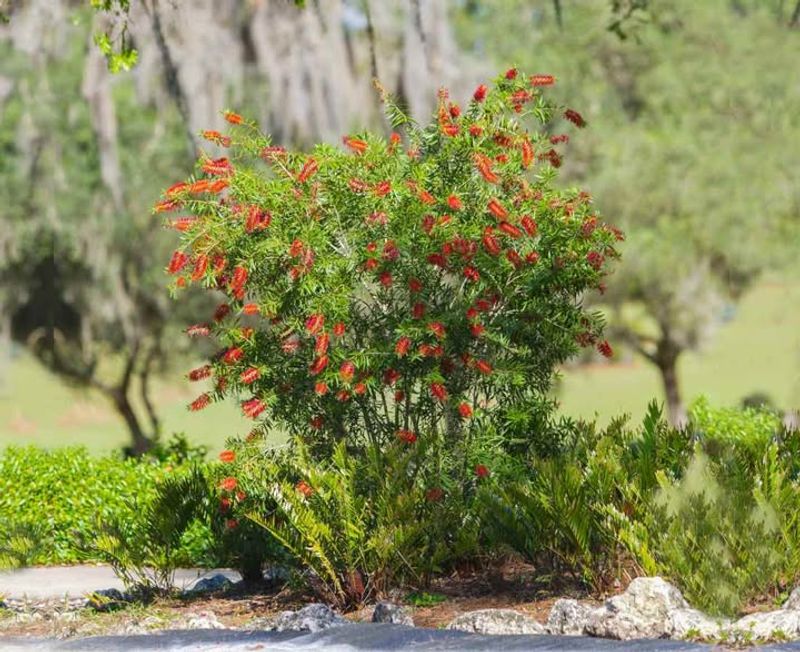Gardening in Nevada comes with unique challenges like scorching heat, dry air, and tough soil conditions. Finding plants that can handle these extremes while still looking beautiful can feel impossible.
But the bottlebrush plant breaks all the rules with its stunning red flowers and incredible toughness, making it a favorite choice for homeowners across the Silver State.
1. Drought Tolerance Makes It Ideal For Desert Climates
Native to Australia, bottlebrush plants evolved in environments similar to Nevada’s arid conditions. Once established, they require minimal watering and can survive extended dry periods without wilting or losing their vibrant appearance.
Homeowners appreciate this low-maintenance quality because it saves time, money, and precious water resources. Perfect for xeriscaping projects, bottlebrush shrubs thrive where other ornamental plants struggle, making them smart choices for sustainable desert landscaping that stays green year-round.
2. Striking Red Flowers Attract Hummingbirds And Butterflies
Those brilliant crimson blooms aren’t just eye-catching—they’re magnets for pollinators! Hummingbirds especially love bottlebrush flowers because their tubular shape perfectly matches the birds’ long beaks and feeding habits.
Butterflies and bees also visit frequently, turning your Nevada yard into a lively wildlife habitat. Flowering typically occurs from spring through fall, providing months of color and entertainment. Watching nature’s smallest creatures enjoy your garden adds an extra layer of joy to growing these remarkable shrubs.
3. Heat Resistance Means Less Stress During Summer
When temperatures soar past 100 degrees, many plants show signs of heat stress like browning leaves or drooping branches. Bottlebrush plants laugh in the face of extreme heat, maintaining their lush green foliage even during Nevada’s brutal summers.
Their waxy leaves help retain moisture while reflecting harsh sunlight, acting like natural sunscreen. This resilience means you won’t spend weekends nursing struggling plants back to health. Instead, you’ll enjoy a consistently beautiful landscape that handles whatever Mother Nature throws its way.
4. Multiple Varieties Offer Different Sizes And Shapes
From compact dwarf varieties reaching just three feet tall to towering specimens growing fifteen feet high, bottlebrush plants come in numerous forms. Little John and Hannah Ray are popular smaller cultivars perfect for container gardening or tight spaces.
Larger varieties like Callistemon viminalis create excellent privacy screens or focal points in spacious Nevada yards. Some grow upright while others spread wide, giving landscapers flexibility in design. Choosing the right variety ensures your bottlebrush fits perfectly into your specific outdoor vision and space requirements.
5. Easy Pruning Keeps Plants Healthy And Shaped
Maintaining bottlebrush shrubs doesn’t require professional skills or expensive tools. Light pruning after blooming seasons helps maintain attractive shapes and encourages bushier growth patterns.
Simply trim back spent flower spikes and any wayward branches using clean, sharp shears. Avoid cutting into old wood, as bottlebrush plants may struggle to produce new growth from those areas. Regular light trimming beats heavy pruning every few years, keeping plants manageable and promoting continuous flowering throughout growing seasons for maximum visual impact in your Nevada landscape.
6. Frost Tolerance Varies By Species Selection
While bottlebrush plants handle heat brilliantly, cold sensitivity differs among species. Most varieties tolerate light frosts down to about 20 degrees Fahrenheit, but prolonged freezes can damage tender growth.
In colder Nevada regions like Reno or Elko, choose hardier cultivars such as Callistemon citrinus, which withstands cooler temperatures better than tropical varieties. Planting near south-facing walls provides extra warmth and protection during winter months. Understanding your local climate zone helps select appropriate varieties that’ll survive and thrive year after year.
7. Well-Drained Soil Prevents Root Problems
Bottlebrush plants despise soggy conditions, making Nevada’s naturally sandy, well-draining soil almost perfect for them. Root rot develops quickly in heavy clay or waterlogged areas, potentially killing otherwise healthy shrubs.
Before planting, test drainage by digging a hole and filling it with water—if it drains within a few hours, you’re good to go. Amending heavy soil with sand or planting on slight mounds improves drainage dramatically. Proper soil preparation from the start prevents frustrating problems later, ensuring your bottlebrush thrives for decades.

